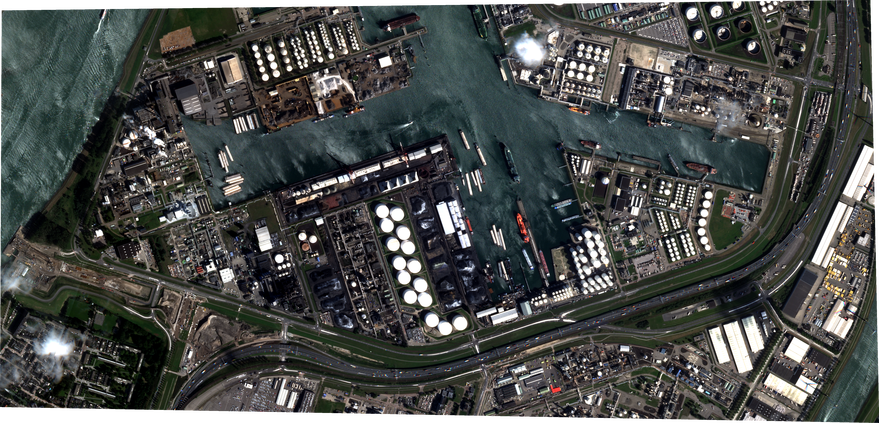
Once populated areas are now deserted as people remain indoors, from previously bustling city centres to places of worship. Roads that had been full of cars are now empty, while beaches are devoid of pretty much all human activity.
The amazing images were taken by California-based company Planet Labs and Colorado-based Maxar Technologies, both of which have fleets of Earth-imaging satellites in orbit. And by comparing the latest views to archival images, stark changes around the world can be seen in impressive detail.
In these two images below supplied by Maxar, the Park Meadows shopping centre is seen in Colorado first on March 10, and subsequently on March 22.
Next, a busy highway interchange is seen in Los Angeles is seen first on January 28 this year, and then on March 22.
Maxar said it usually takes images during the middle of the day, between 10.30 A.M. and 1.30 P.M., with the images highlighting “a notable decrease in traffic on highways and at commuter parking lots since social distancing measures and ‘work from home’ policies have been put into place.”
At the Salt Like City International Airport in Utah on March 5, multiple planes are seen at gates dropping off or picking up passengers. Two weeks later on March 16, however, the planes are all but gone as air travel grinds to a halt.
A rental carpark at the same airport has seen massive increases in vehicles with a fall in customers. On March 5 it looks about half full, but on March 16 it is close to overflowing.
“Cars in rental car lots have skyrocketed,” said Maxar. “At some airports, rental cars are overflowing into newly creating parking areas.”
Similar increases in vehicles can be seen at Phoenix International Airport in Arizona below on March 5 and March 23.
Meanwhile, visitors to Denver International Airport have plummeted, as these images from March 7 and March 22 show.
It’s not just in the U.S., of course. Images show how the number of unused parked planes at the Munich International Airport in Germany has dramatically increased.
And at the Stockholm Arlanda Airport, both the number of planes and cars have dropped considerably between February 12 and March 19.
Tourist destinations too have seen big changes. Below is the Santa Monica Pier in California, first on March 11 and again on March 22.
“Many tourist attractions recently closed as social distancing became widely embraced as a strategy for fighting the coronavirus,” said Maxar, noting their imagery “demonstrates the significant decrease in visitors at these sites.”
The outside of the Colosseum in Rome is bustling with visitors on February 21, but is then completely deserted on March 18.
And similarly, the Taj Mahal in India on February 10 is busy, with people visible all over the site. One month later on March 18, most people are gone.
Maxar’s images on April 28, 2017 and subsequently on February 22, 2020 also show the arrival of a temporary hospital in Wuhan, China, to tackle the pandemic.
Images from Planet Labs tell a similar story. On February 19, the area around the Chicago Shedd Aquarium in the U.S. is full of cars and activity. By March 17, however, it’s all but a ghost town.
Seen here is the Copacabana beach in Rio, Brazil. The first image shows the beach bustling with people on April 28, 2018. The next is taken on March 23, almost entirely empty.
These next images show Disney World in Florida, first on January 6 and full of cars and people, then again on March 18, empty.
Here’s Mecca in Saudi Arabia, first on January 25 and bustling with lots of people, and then again on March 10, nearly empty.
This is Piazza San Marco in Venice, first seen teeming with boats on October 20, 2019, and then devoid of activity on March 18, 2020.
And finally, traffic in Wuhan seen first in full flow on January 12 this year, followed by near silence following the lockdown on January 28.
Perhaps these images, more than anything, highlight just how much of the world has shut down as it continues to battle the COVID-19 pandemic.